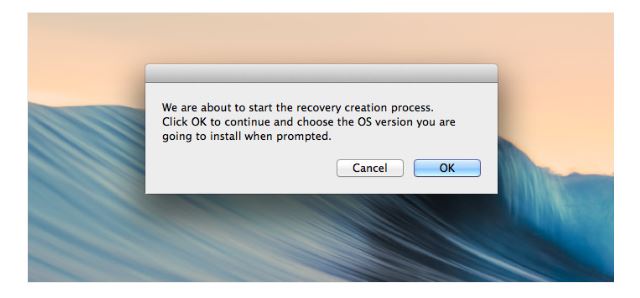

In this case, I’m only having it check for and install all available Apple software updates but it could be installing any desired package. On restart, the First Boot Package Install package is able to run its own workflow, which is able to suppress the Apple Setup Assistant and run its assigned installation task. Once installation is completed, select the option to restart. The First Boot Package Install package included in the disk image is installed.Ħ. Select the volume to install on (in this example, the volume is named Macintosh HD.) The bootstrap disk image mounts as a new volume named bootstrap.ĥ. Hdiutil mount /Volumes/Provisioning/bootstrap.dmg
#Mac os recovery generator
On the disk image, I’ve included one installer package named First Boot Package Install, which was generated by my First Boot Package Install Generator tool.

In this case, I’ve set up a disk image using the instructions provided at the bootstrappr GitHub repo and copied it to an external drive named Provisioning.
#Mac os recovery mac
The MDM service then configures the Mac as desired with your organization’s software and configuration settings. When a DEP-enrolled Mac is started for the first time (or started after an OS reinstall), it is automatically configured to use your organizations’ MDM service and the device checks in with the MDM service. In this case, you would need to arrange with Apple or an Apple reseller to purchase Macs that are enrolled in your organization’s DEP. As Apple releases new Mac models equipped with T2 chips and Secure Enclave, it is unlikely that these future Mac releases will be supporting NetBoot.įor Mac admins using NetBoot-based workflows to set up their Macs, what are the alternatives? Apple has been encouraging the use of Apple’s Device Enrollment Program, which leverages a company, school or institutions’ mobile device management (MDM) service. However, Apple’s release of of T2-equipped MacBook Pros in July 2018 which also could not use NetBoot has made Apple’s direction clear.
#Mac os recovery pro
With NetBoot not being available for the iMac Pro but still available for other models, it wasn’t yet clear if NetBoot-based workflows for setting up new Macs or rebuilding existing ones were on the way out.

The iMac Pro is still able to boot to Internet Recovery, which provides a way to repair the Mac or reinstall the operating system in situations where the Mac’s own Recovery volume is missing or not working properly. The one exception was Apple’s Internet Recovery, where Apple is providing a NetBoot-like service to provide access to macOS Recovery. Along with the new Secure Enclave protection provided by Apple’s T2 chip, the iMac Pro brought another notable development: It did not support booting from a network volume, otherwise known as NetBoot. In late 2017, Apple released the iMac Pro.


 0 kommentar(er)
0 kommentar(er)
